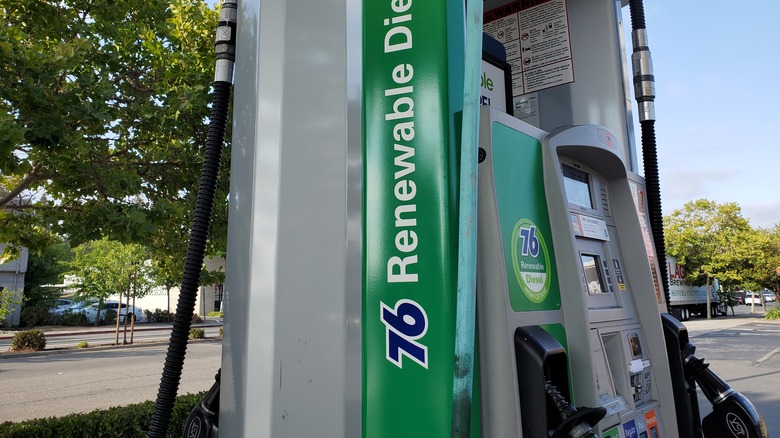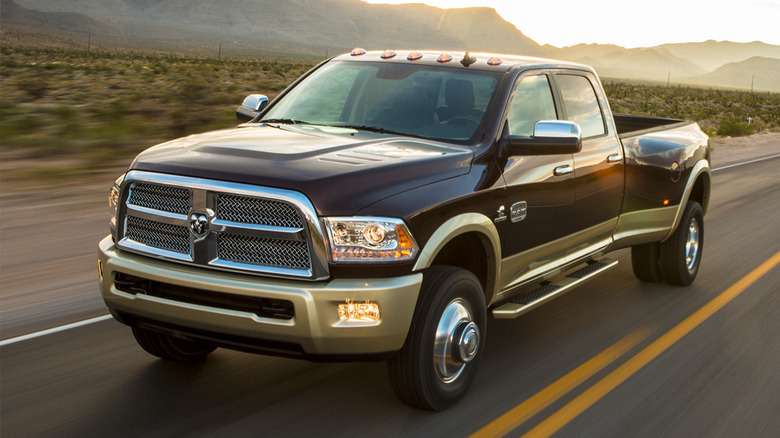Can A Cummins Engine Run On Biodiesel?
Biodiesel isn't some experimental, high-tech fuel. It's already here, widely used, and made from everyday materials like vegetable oils, animal fats, and recycled cooking grease. Chemically speaking, biodiesel is categorized as FAME or FAEE — short for fatty acid methyl and fatty acid ethyl esters, respectively. But the big thing to know is that it behaves a lot like petroleum diesel, making it a prime candidate for vehicles with compression ignition engines, including most diesel trucks.
Now, if you're driving a Cummins-powered pickup truck, the odds are high that you're already good to go with biodiesel blends — specifically B20, which is 20% biodiesel and 80% conventional diesel. Cummins details that pickups like a 6.7-liter Cummins-equipped Ram 2500 and on-highway commercial trucks with engines such as the ISX, ISM, ISL, ISV5.0, and ISB (post-2007) are all in the B20 club. Even the earlier ISX CM570 models built after 2002 are good to go.
Construction, agricultural, and marine vehicles using Cummins QSX, QSM, QSL, QSC, QSB, or QSF3.8 engines built after 2007 are compatible too. Even high-horsepower behemoths like the QSK78 and K2000E are approved for biodiesel, as long as they were produced after 2008 (except Tier 4 engines). These engines often power mining trucks, industrial machines, and ocean-faring vessels. Just keep in mind that anything above B20 should be approached with caution unless explicitly approved by the manufacturer.
Why switch to biodiesel in the first place?
Biodiesel isn't just better for the planet. It can also boost how your engine performs. Thanks to a higher cetane rating, usually between 45 and 55, the fuel ignites more efficiently in the combustion chamber compared to petroleum diesel, which typically hovers between 40 and 45. This usually translates to quicker starts, smoother combustion, and reduced engine noise, especially in colder climates.
There's also an uptick in lubricity. Modern diesel fuel is made with low sulfur content, which results in a fuel that lacks lubricating properties. Cummins says that even a 2% biodiesel blend can restore lubrication, which in turn helps protect critical components like high-pressure fuel pumps and injectors. That said, there's one downside: Biodiesel gels more easily in very cold weather and may degrade faster if not stored properly.
Even if the performance gains are minor, biodiesel's environmental benefits still make it a compelling choice. For one, using B20 can cut CO2 emissions by around 15%. These numbers matter, especially for fleet operators working toward ESG goals or trying to stay ahead of tightening environmental regulations. Biodiesel also makes sense from a practical and financial standpoint for operators. For most Cummins engines, biodiesel is a drop-in fuel, meaning you don't need to modify your engines or build new fueling infrastructure. That saves both time and money. Additionally, since biodiesel blends like B5 and B20 are already widely distributed at fueling stations across the U.S., fleets can start using them immediately without disrupting their routes or operations.

